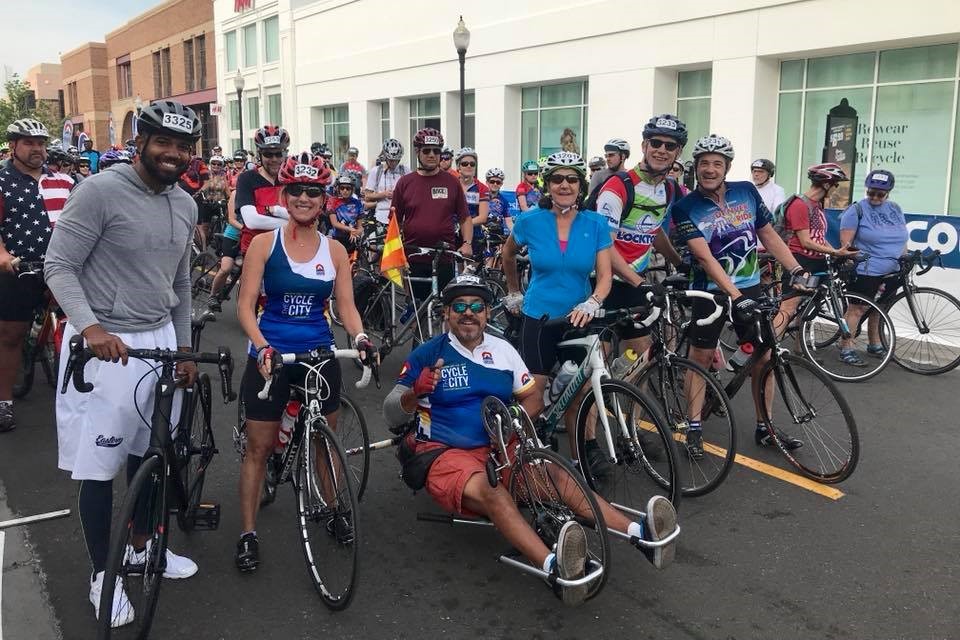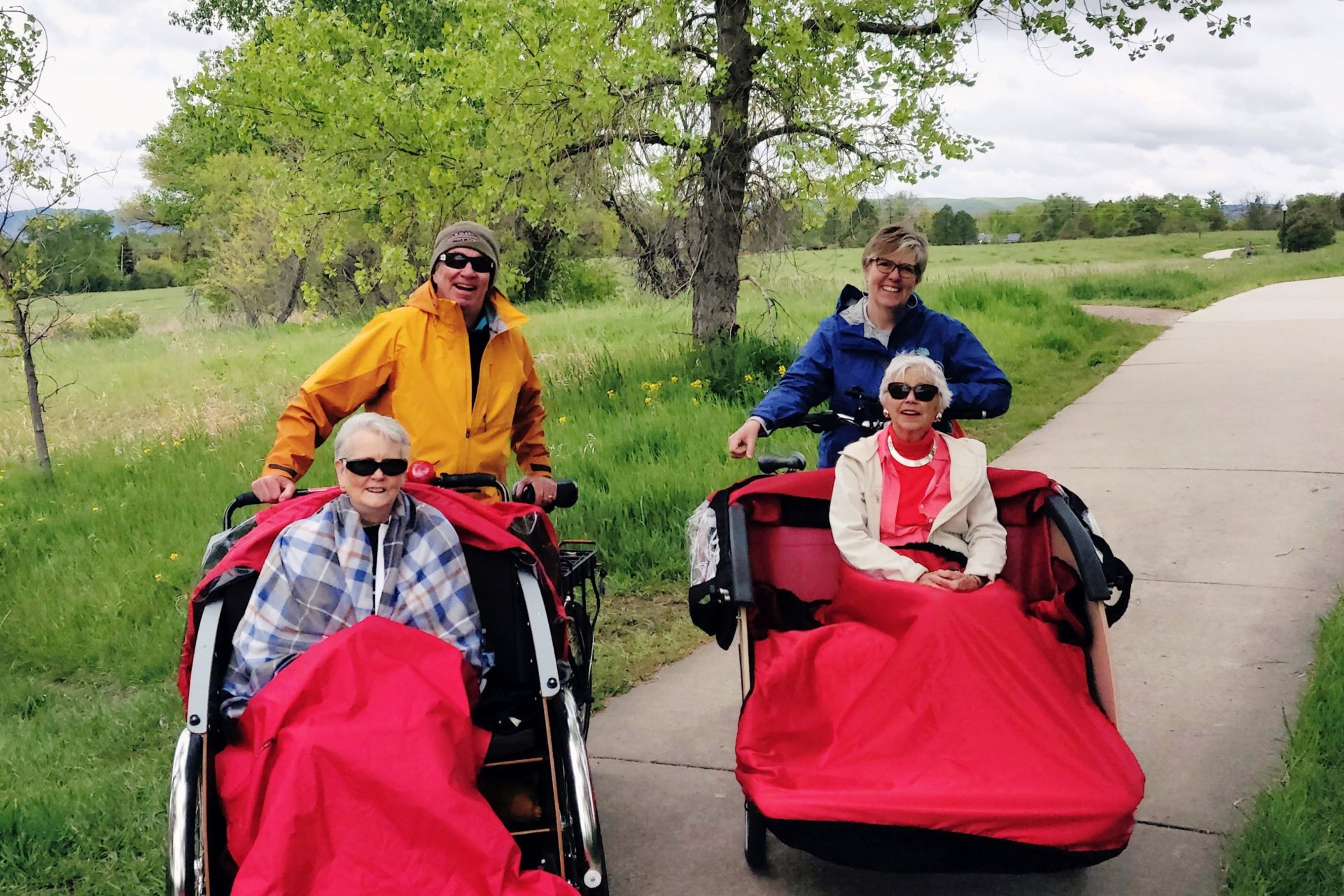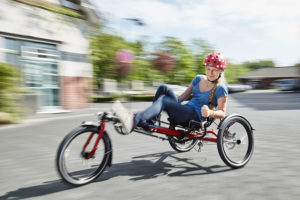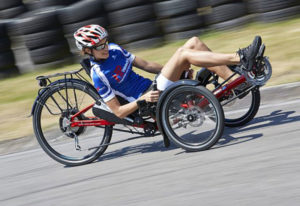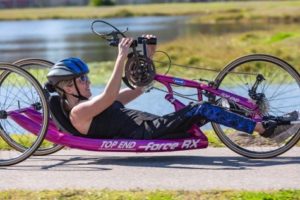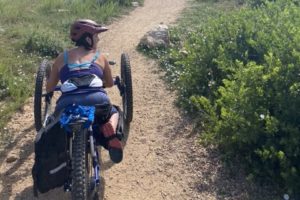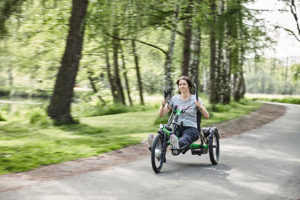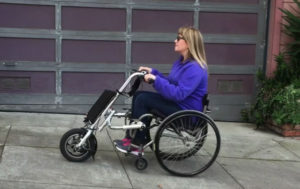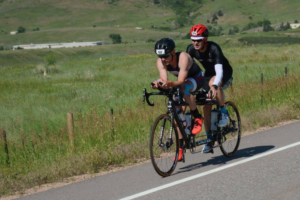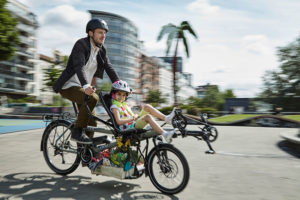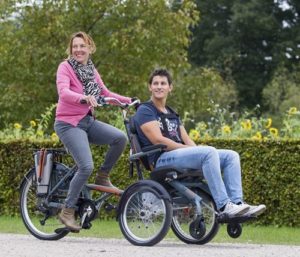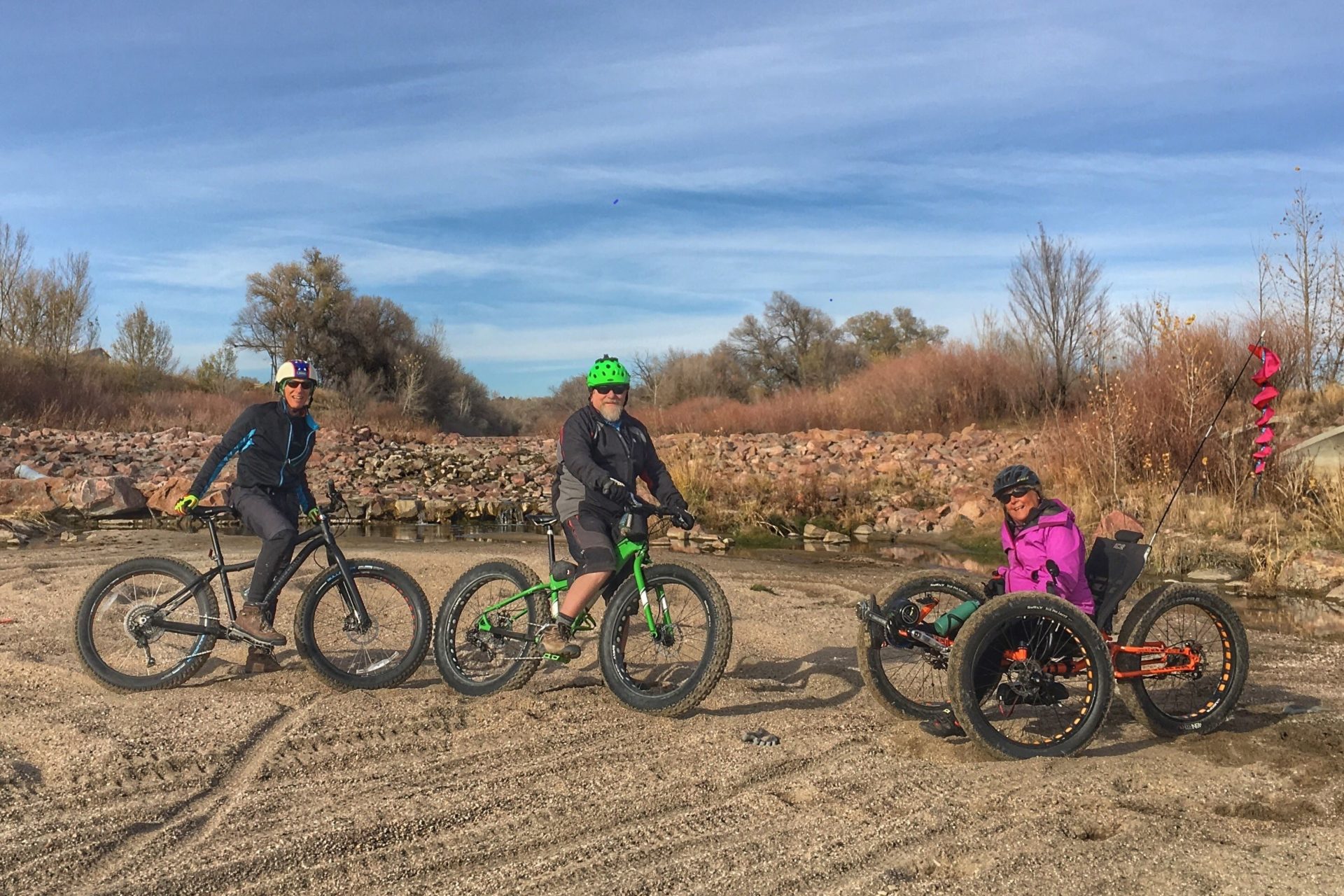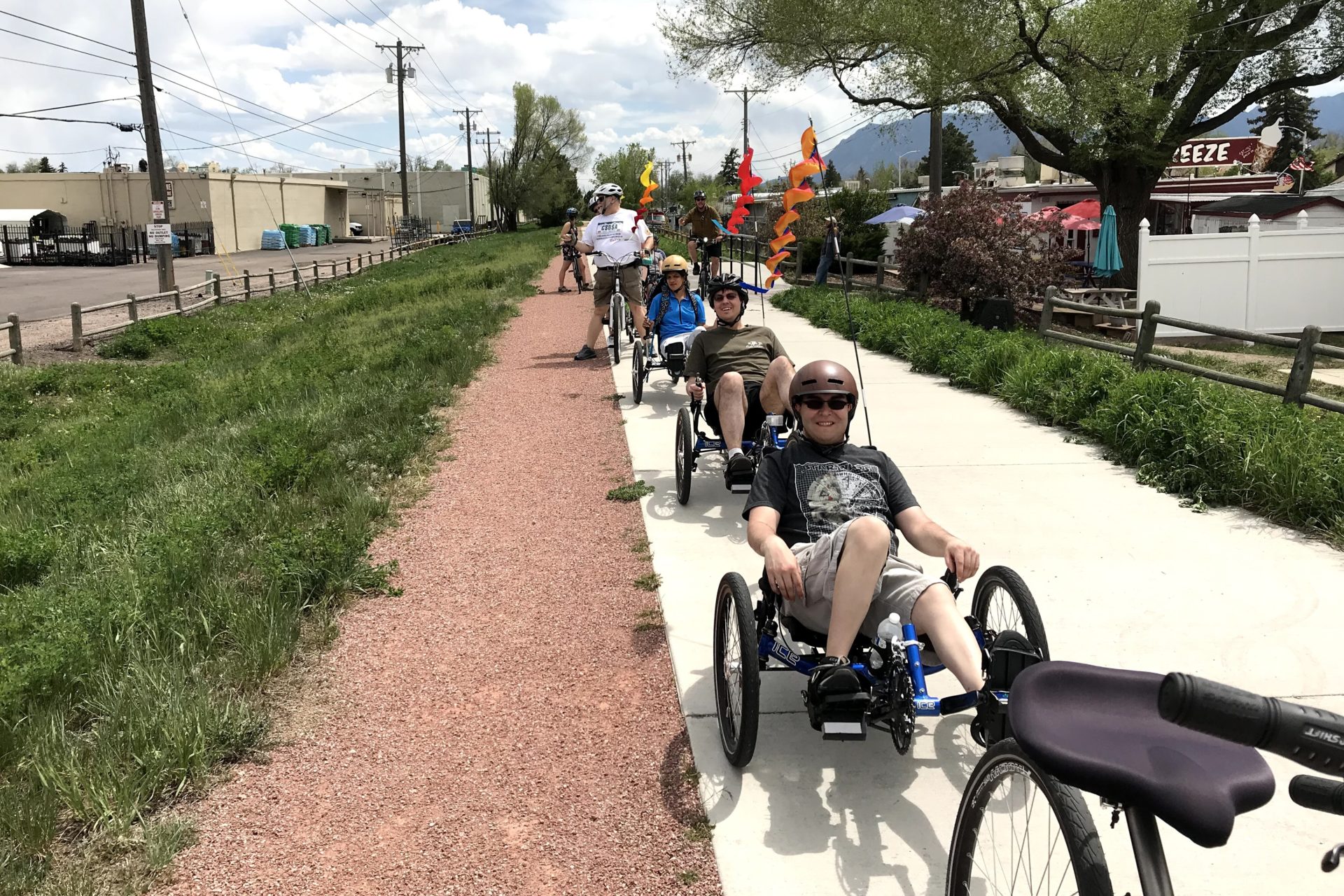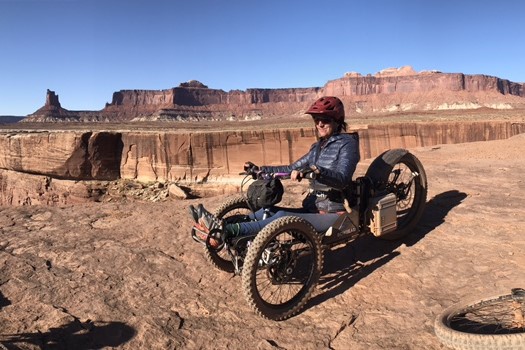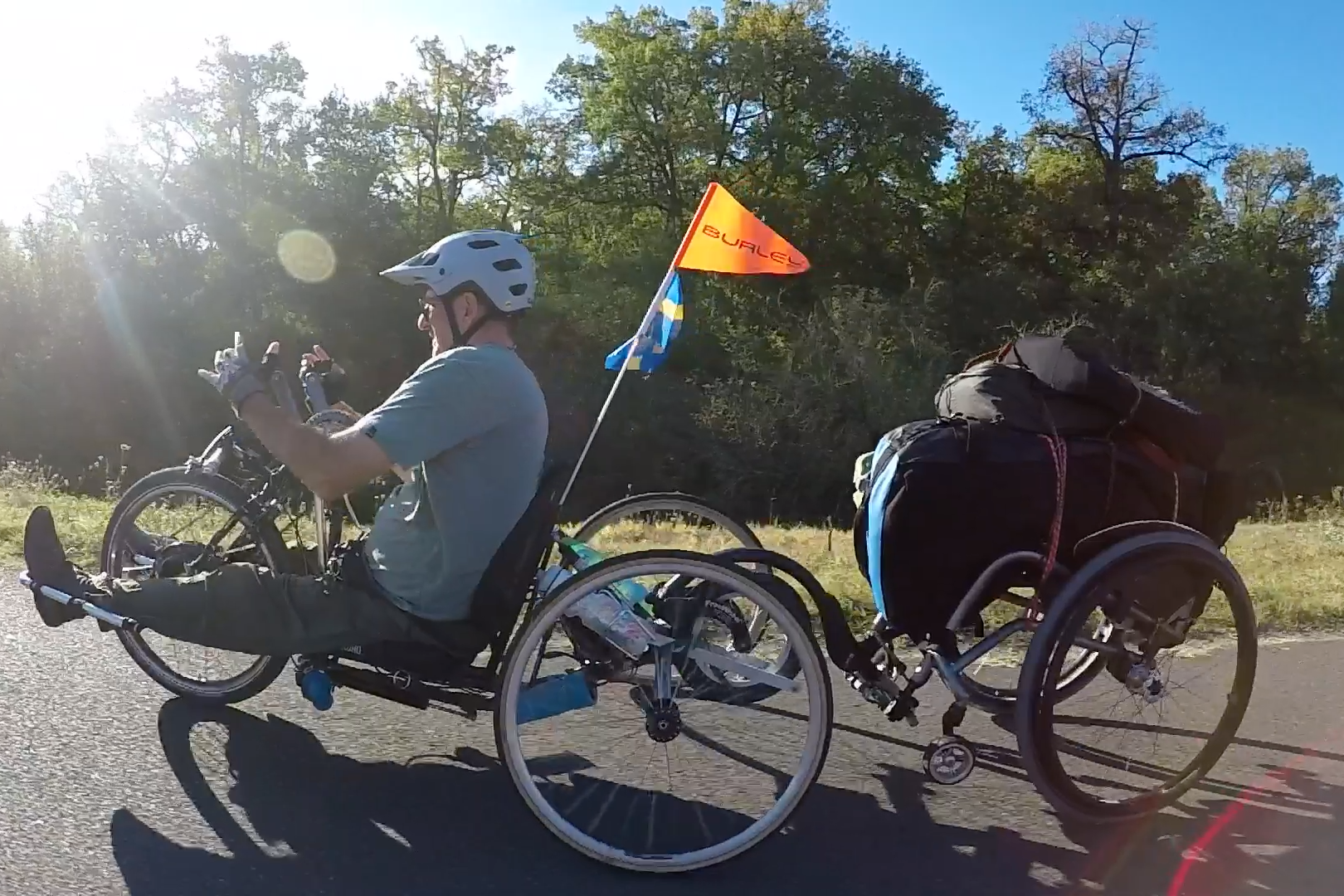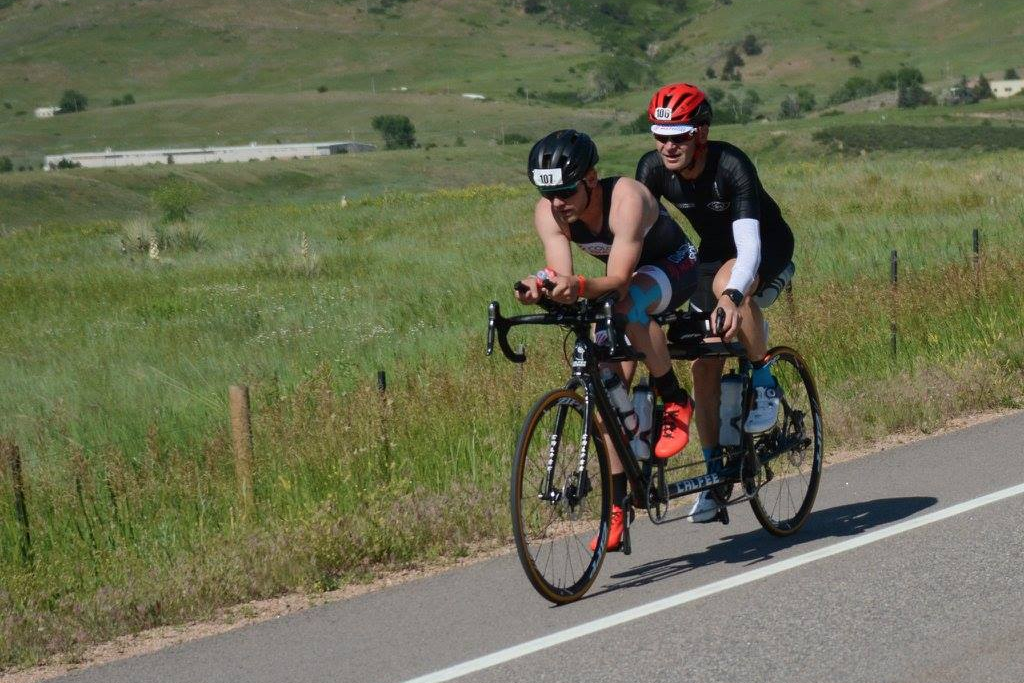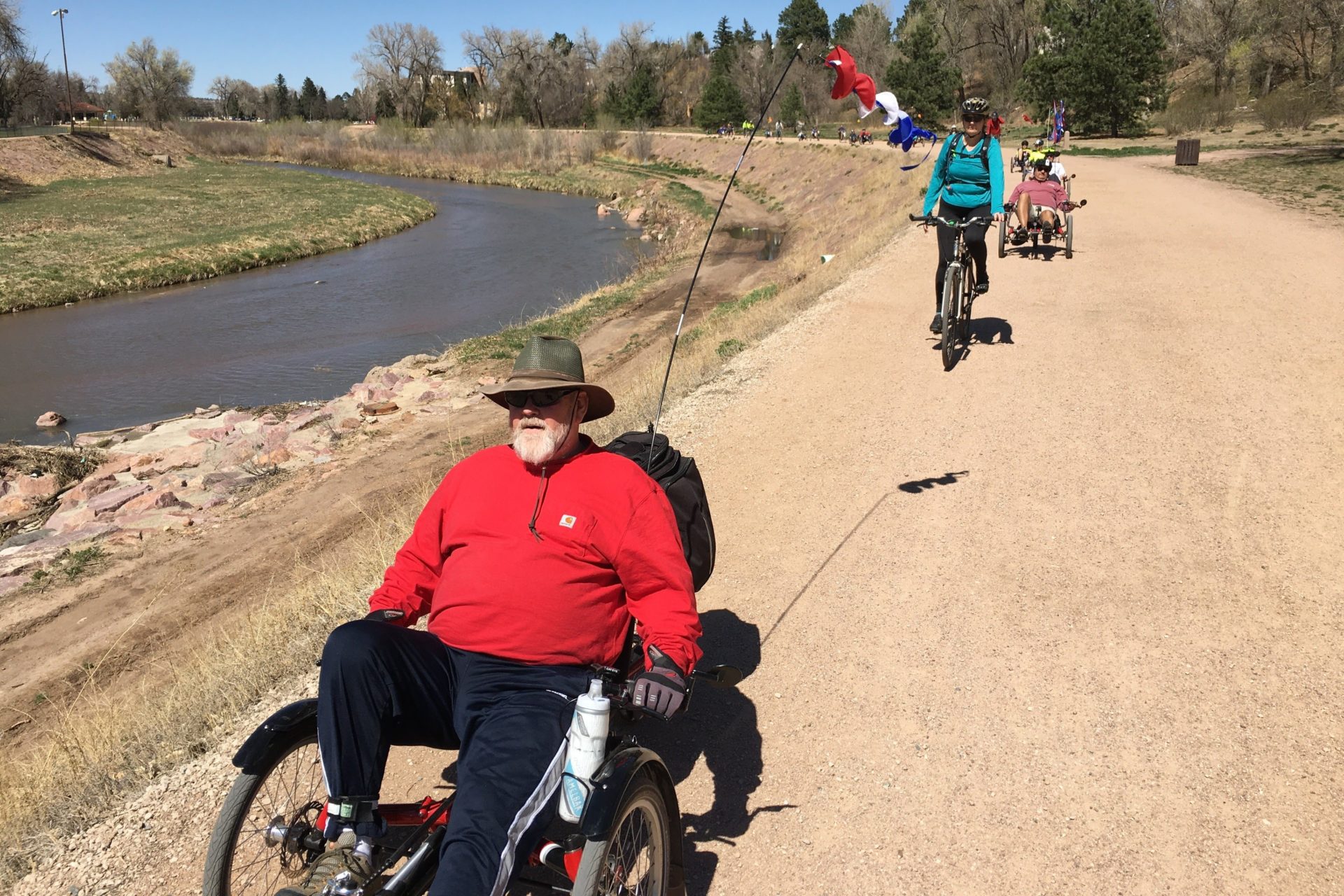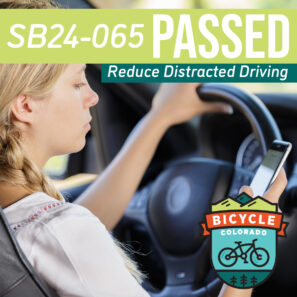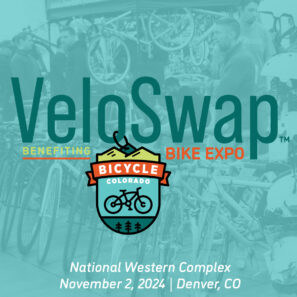Activities
Achilles International Pikes Peak Chapter: This organization brings people together and provides free, weekly training opportunities throughout the year. They pair athletes with disabilities with volunteer guides to train in an environment of support and community. Located in Colorado Springs. Achilles International has chapters around the country.
Adaptive Adventures: Provides ongoing programs, camps and clinics for a lot of different outdoor activities, including cycling. People can participate in one-day experiential programs, single-day community rides, multi-day clinics and challenge rides. They have a fleet of hand cycles, recumbent foot-pedaled trikes, tandems and traditional bikes, coupled with a variety of adaptive equipment to make modifications. Located in Lakewood, but with events online and around the country.
Adaptive Sports Association: This organization provides outdoor, sport and recreational experiences for people with disabilities. Join their bike riding programming in the summer, and take advantage of the scholarships they have available. Located in Durango.
Adaptive Sports Center of Crested Butte: Provides year-round outdoor adventure activities for people with disabilities. In the summer, join mountain and road biking activities using a variety of leg and arm powered adaptive cycles. And, check out the Adaptive Mountain Biking World Championships! They have many other activity options as well. Located in Crested Butte.
All Bodies on Bikes: is a movement to create and foster a size-inclusive bike community. They believe that anyone who wants to ride a bike should be able to, regardless of their size or weight. They are creating inclusive bike communities from the inside. They have resources, events, local chapters, and more.
Breckenridge Outdoor Education Center: Provides year-round outdoor adventure activities for people with disabilities. Join their biking activities in the summer. Their programs include camps and retreats, custom group programs and veterans programs. They have many other activity options, too. Located in Breckenridge.
Challenge Aspen: This organization provides year-round adaptive experiences for individuals faced with cognitive and/or physical disabilities. Join a summer camp, register for organized or custom groups and more. Activities include adaptive biking and many others. Located in Snowmass Village.
Colorado Discover Ability: This organization provides outdoor, sport and recreational experiences for people with disabilities. Alongside other activities, they offer a “Get Back on the Bike” cycling program with their fleet of adaptive bikes and trikes, and programming just for veterans, too. Located in Grand Junction.
Cycling Without Age: This program brings together volunteer “pilots” to give rides on trishaws to older adults with limited mobility. There are chapters in Colorado in the following cities: Boulder, Colorado Springs, Durango, Englewood, Glenwood Springs, Lafayette, Lakewood, Littleton, Poudre and Rifle.
Eyecycle Colorado: This organization offers organized tandem rides for blind and visually impaired bicyclists. They recruit and train sighted captains for the front seat of the tandem bike and pair them up with a blind or visually impaired stoker riding in the back seat. Located in Denver.
Move United: A network of organizations for disabled and injured athletes and people who want to recreate outdoors. The site provides a listing of local member organizations, an event calendar and resources about adaptive sports and equipment.
National Sports Center for the Disabled: This organization provides outdoor, sport and recreational experiences for people with disabilities. They offer custom group activities for at least five people that can include biking. They also have a number of military veterans programs. They have two locations, one in Denver and one in Winter Park.
Sportsabilities (Colorado): An online resource for people with disabilities to find recreational, advocacy, support and adaptive sporting activities. They have activities sorted by state and by type of activity.
Steamboat Adaptive Recreational Sports: This organization provides outdoor, sport and recreational experiences for people with disabilities. Their summer activities include adaptive mountain bike clinics, but they offer a lot of other activities as well. Located in Steamboat Springs.
Telluride Adaptive Sports Program: This organization offers a variety of year-around activities for all ages and ability levels. These activities include road and trail riding in and around Telluride in the summer, fat tire biking lessons in the winter and programming for active military and veterans with disabilities. They have many other types of activities, too. Located in Telluride.
National, state park and local adaptive programs and resources
- Great Sand Dunes National Park has a limited number of sand wheelchairs available for loan at the visitor center. The “Accessibility” section of their website offers details on the chairs and how to reserve them.
- Staunton State Park offers a Track-Chair Program. The chairs allow access to three trails, each featuring gorgeous park feature including high grassy meadows, a wide variety of wildlife, geological and water features.
- Check out your community’s parks, trails or recreation department website to see if they have an adaptive recreation or therapeutic recreation program, or other resources for people with disabilities using the parks and trails. Below are some recreation departments Bicycle Colorado has worked with:
Did we miss you? Please let us know by emailing info@bicyclecolorado.org!
Jump to Page Contents
